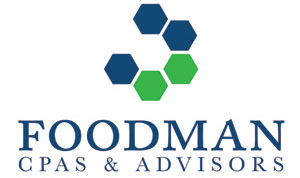The IRS wants to encourage Voluntary Disclosure participation and reduce Taxpayer uncertainty, but its current Voluntary Disclosure Program is not set up for success according to the 2021 National Taxpayer Advocate Annual Report, issued in January 2022. Shortly thereafter, in February 2022, the IRS updated the Program to include crypto reporting, a penalty structure for employment tax and estate and gift issues and an inability to pay in full.
The 2021 National Taxpayer Advocate Annual Report issued to Congress states that the current Voluntary Disclosure Program (VDP) raises the question of whether the program achieves the IRS’s historical policy to encourage taxpayers to voluntarily identify themselves. The current VDP was changed on November 20, 2018, when the IRS released a new interim guidance memorandum to address updated VDP procedures. The Taxpayer Advocate Service (TAS) reports that the changes incorporated in the current VDP discourage Taxpayers’ participation, expose Taxpayers to possible criminal prosecution and allow Revenue Agents broad penalty discretion.
The current VDP
Is managed by the IRS Criminal Investigation Unit (IRS-CI). A voluntary disclosure takes place with IRS-CI when a Taxpayer:
- Provides a truthful, timely, and complete disclosure through designated procedures.
- Cooperates in determining their correct tax liability.
- Makes good faith arrangements to pay in full the tax, interest and any applicable penalties owed.
Timely, accurate, and complete voluntary disclosures are taken under consideration by IRS-CI when determining whether to recommend criminal prosecution. While a voluntary disclosure will not automatically guarantee immunity from prosecution, it historically results no prosecution.
A current Voluntary Disclosure is a 2 STEP process
To apply for the current VDP, a Taxpayer must first:
- Fill out Part I of Form 14457, the Voluntary Disclosure Practice Preclearance Request and Application PDF to request preclearance. Preclearance determines a Taxpayer’s eligibility for the program but does not guarantee preliminary acceptance into it. Part I can be faxed or emailed to IRS-CI. Part I is the Preclearance request and it is mandatory by IRS-CI.
- Submit Part II of the Voluntary Disclosure Application within 45 days or make a written request for additional time once the Taxpayer has received preclearance confirmation. Extension requests are approved on a case-by-case basis. No more than one, 45-day, extension is permitted. Part II is the actual voluntary disclosure and must include a narrative statement of facts detailing the Taxpayer’s willful conduct.
IRS-CI reviews Part II of Form 14457 and determines if the Taxpayer can participate in the VDP. If approved to participate, CI will provide the Taxpayer with a Preliminary Acceptance Letter and forward the Taxpayer’s Form 14457 to a civil section of the IRS. Once a Taxpayer’s case is assigned, an examiner contacts the taxpayer. Full Taxpayer’s cooperation with the examiner in providing documents and information is expected.
TAS’ Concern
Under the current VDP, Taxpayers are required to admit potentially incriminating details of their tax situation in their Pre-clearance that is signed under penalties of perjury before obtaining preliminary acceptance into the VDP. This could be self-incrimination as the Taxpayer is proceeding without certainty from the IRS.
Although the program provides “general guidance” to an IRS examiner, the TAS’ sentiment is that the Examiner has substantial discretion if a Taxpayer refuses to agree to all proposed tax and penalty computations. In the event that a Taxpayer does not agree with the Examiner’s computations, the Examiner may label the Taxpayer as not cooperative, and the preliminary acceptance may be revoked. In addition, the Examiner may audit additional tax years outside of the normal six-year disclosure period; increasing fines and penalties.
The determination of whether a Taxpayer’s behavior is willful more complicated than it seems at first blush
Under the U.S. tax code, a “Willful mistake” on a US Tax return can be the difference between only money consequences and a prison sentence. So yes, there a consequential difference between an “innocent mistake” and a “willful mistake”.
On February 2022, IRS announced an update to the Form 14457, Voluntary Disclosure Practice Preclearance Request and Application. Did they listen to TAS?
The IRS announced that Form 14457, the Voluntary Disclosure Practice Preclearance Request and Application, has been revised, including expanding a section on reporting virtual currency. Form 14457 permits taxpayers who may face criminal prosecution for willful violation of tax law to voluntarily disclose information to the IRS that they failed to previously disclose. IRS stated that the updates and additions to this form include:
- IRS Criminal Investigation now accepts photocopies, facsimiles and scans of taxpayer signatures. Taxpayers can send this form via eFax to 844-253-5613 to reduce mailing and processing times. Previously, Part II of this form had to be mailed.
- An expanded section for reporting virtual currency.
- A penalty structure for employment tax and estate and gift issues.
- A checkbox for inability to pay in full.
Do this:
- Hire a US licensed CPA with an international tax practice who will recommend a US licensed tax attorney so that all information and work done prior to submitting amended income tax returns can be protected under attorney-client privilege until a VDP is made.
- It is evident that the IRS is cracking down on potential cryptocurrency tax evasion. Have all of your records up to date and organized in order to identify cost basis, taxable transactions and potential capital gains, losses, and income.
Voluntary disclosures cover a six-year period and are intended to be for Taxpayers that want to come into compliance and avoid potential criminal prosecution. If the IRS finds the Taxpayer first, the Taxpayer will not qualify for the VDP.
©





